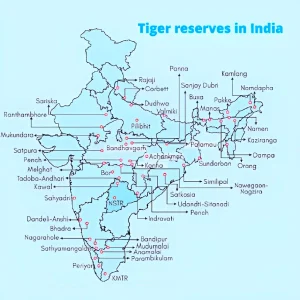India’s 56th Tiger Reserve (Guru Ghasidas Tamor Pingla)
The Guru Ghasidas Tamor Pingla Tiger Reserve, located in Chhattisgarh, has been declared as India’s 56th Tiger Reserve. This reserve serves as a critical wildlife corridor between Madhya Pradesh and Jharkhand, promoting biodiversity conservation. Known for its rich ecosystem, it supports a variety of species, including tigers, and plays a vital role in protecting the region’s ecological balance. This declaration highlights India’s ongoing efforts toward tiger conservation under Project Tiger.
List of 58th Tiger Reserves in India 2025
As of 2025, India has a total of 58 Tiger Reserves, established under Project Tiger to protect the endangered species and their habitat. The latest addition to the list is the Ratapani Tiger Reserve in Madhya Pradesh, which was declared the 58th Tiger Reserve in India in 2024. These reserves play a vital role in conserving biodiversity and maintaining ecological balance across the country.

 GS Foundation
GS Foundation Optional Course
Optional Course Combo Courses
Combo Courses Degree Program
Degree Program

















